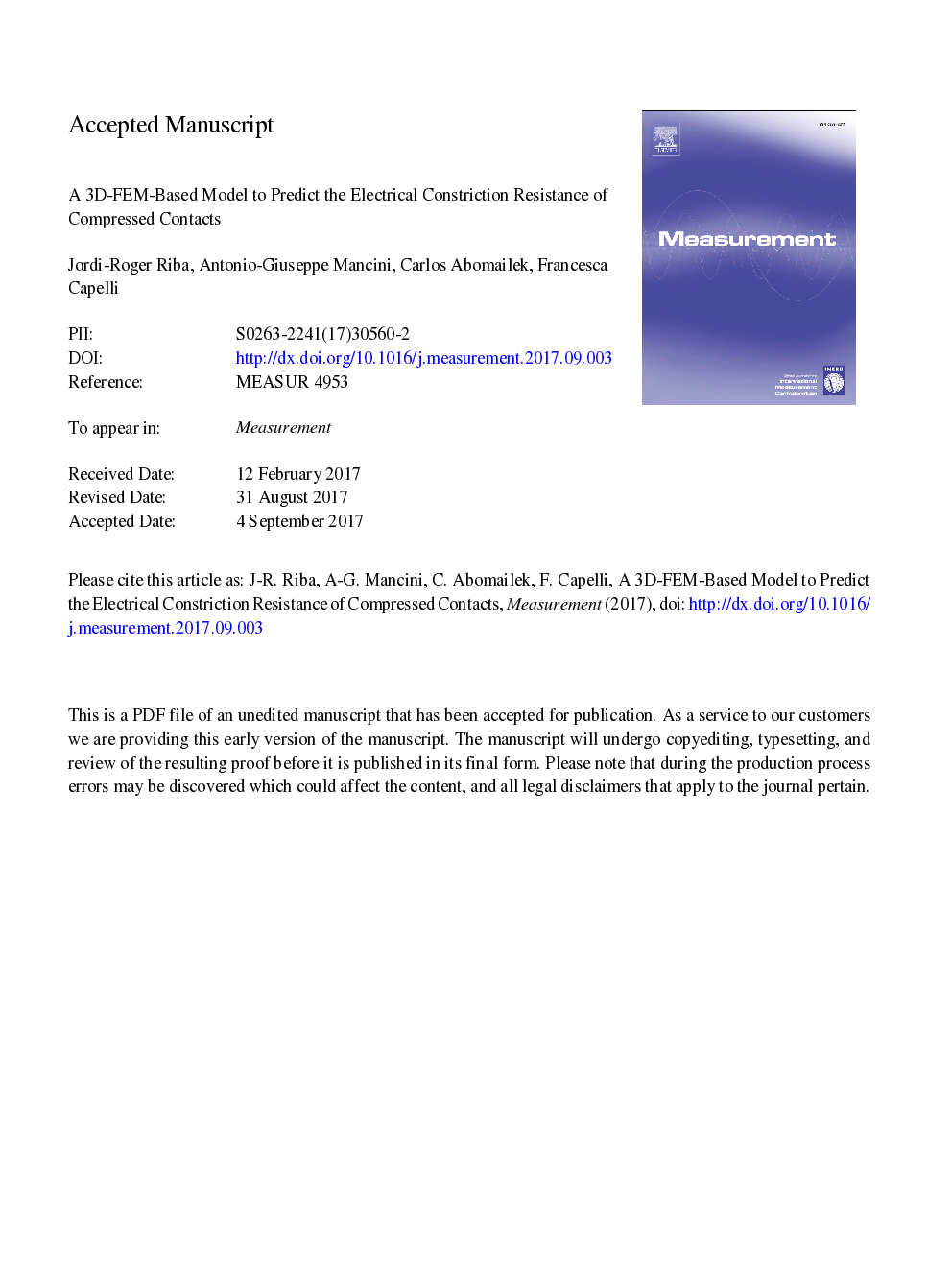| Article ID | Journal | Published Year | Pages | File Type |
|---|---|---|---|---|
| 5006300 | Measurement | 2018 | 15 Pages |
Abstract
This work proposes a method to estimate the electrical constriction resistance of two mating metallic rough surfaces based on the finite element method (FEM). The FEM-based method generates a random array of three-dimensional orthogonal parallelepipeds to simulate the stochastic distribution of the asperities across the contact interface. The effect of the contact pressure is studied in detail, since once the contact materials and the topology of the contact area are settled, the contact pressure plays a critical role in determining the electrical constriction resistance. The proposed model is based on two critical variables, the contact pressure and the surface roughness of the mating surfaces, which must be measured in the laboratory to calibrate the model. Results provided by the FEM-based model are compared with experiments for three geometries, thus validating the accuracy of the proposed approach. Although the apparent contact areas of the analyzed specimens have a rectangular shape, the proposed method is also applicable to determine the electrical constriction resistance of other geometries. It is also proved that depending on the pressure applied to the contact interface, the electrical constriction resistance can be almost independent of the apparent area of contact. Although the aim of this work was to generate an electrical constriction resistance model for power connectors, it is also applicable to many other power devices.
Related Topics
Physical Sciences and Engineering
Engineering
Control and Systems Engineering
Authors
Jordi-Roger Riba, Antonio-Giuseppe Mancini, Carlos Abomailek, Francesca Capelli,
